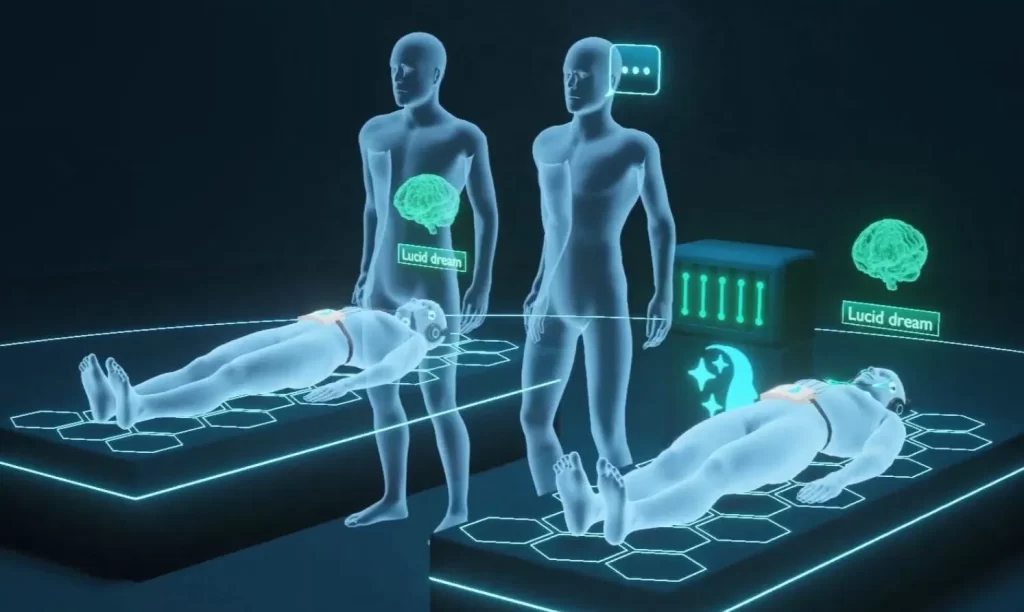A groundbreaking study conducted by REMspace, a neurotechnology company based in California, has made headlines by successfully recording two-way communication between individuals while they were lucid dreaming. This innovative research marks a significant milestone in the field of sleep studies, demonstrating that not only can people become aware of their dreams, but they can also interact and exchange information during this state.
The Historic Experiment
On September 24, 2024, the REMspace team conducted a carefully monitored experiment involving two participants who were equipped with specialized tracking equipment. Over the course of nearly five years, researchers worked rigorously to develop a method that would allow for communication during lucid dreams, a phenomenon that has long fascinated both scientists and dream enthusiasts.
During the experiment, participants slept in their own homes while their brain activity and other vital signs were monitored. When one participant entered a lucid dream state, the tracking equipment detected this change and sent a pre-recorded message in a specially designed artificial language, known as Remmyo, directly to them through earbuds. The participant then repeated the message within the dream, which was captured and transmitted to the second participant as she entered her own lucid dream. Upon awakening, she confirmed the receipt of the message, making this the first recorded instance of two-way communication in a dream state.
What is Lucid Dreaming?
Lucid dreaming occurs when an individual becomes aware that they are dreaming while still immersed in the dream environment. This unique state happens during Rapid Eye Movement (REM) sleep, when brain activity is heightened, and dreams are most vivid. During a lucid dream, people often find they can control their actions and even influence the course of the dream itself.
The REMspace study has illuminated the potential of dreams as a medium for communication, suggesting that what was once relegated to the realm of science fiction may soon become a part of everyday life.
The Implications of Dream Communication
Michel Raduga, the founder and CEO of REMspace, expressed his excitement over the study’s findings, emphasizing the transformative potential of this technology. “Yesterday, communicating in dreams seemed like science fiction,” Raduga remarked. “Tomorrow, it will be so common we won’t be able to imagine our lives without this technology.”
The implications for both personal development and broader communication systems are vast. Raduga believes that if dreams can become platforms for human interaction, this could pave the way for numerous applications, including skill development and therapeutic benefits. He noted that practicing skills in a lucid dream might be just as effective as real-life practice, offering a safe environment free from the constraints of the physical world.
Potential Applications and Benefits
The possibilities for lucid dreaming as a communication platform extend beyond mere novelty. According to Raduga, the ability to confront fears or practice skills in a dream can lead to real-world benefits. For example, if someone uses lucid dreaming to confront a phobia, they might find it easier to deal with that fear in waking life. This therapeutic application could help reduce nightmares, enhance emotional well-being, and promote a more restful sleep experience.
Moreover, the communication aspect of lucid dreaming opens up new avenues for collaboration and learning. Imagine being able to practice a musical piece with a partner in a shared dream or to receive guidance from an instructor while you dream. Such experiences could redefine how we approach education, teamwork, and personal growth.
Future of Dream Communication Technology
With the success of this study, Raduga believes that it is only a matter of time before dream communication becomes a commonplace reality. He anticipates that commercial devices for this purpose will be available as soon as next year, although initial access will be limited to a small segment of the population. As technology continues to advance, he envisions that devices enabling lucid dream communication will become as essential as smartphones by the 2030s.
“The technology will improve each year, making it easier for people to initiate lucid dreams and communicate within them,” Raduga explained. He foresees a future where not only will individuals communicate with each other in dreams, but also with smart home devices or even AI systems designed to facilitate dream experiences.
Challenges and Considerations
Despite the excitement surrounding these advancements, the study also raises ethical and practical questions. How will we navigate privacy and consent in a realm as intimate as our dreams? What safeguards will be in place to protect individuals from unwanted communication or manipulation while they are in a vulnerable state of sleep?
Moreover, the accessibility of such technology could pose issues. While early adopters may benefit from dream communication devices, there is a risk that a digital divide could emerge, leaving some individuals without access to these groundbreaking tools.
Conclusion
The REMspace study has opened a new frontier in our understanding of lucid dreaming and its potential applications. As researchers delve deeper into the phenomenon of dream communication, the line between waking life and our dream states continues to blur. With the promise of facilitating interactions and personal growth through lucid dreams, the future looks bright for this intriguing field of study.
In summary, the ability to communicate while lucid dreaming not only challenges our understanding of sleep but also inspires a vision for a future where dreams could serve as a powerful platform for human connection and personal development. As this technology evolves, it could reshape our experiences, enhance our learning capabilities, and fundamentally change the way we interact with each other and the world around us.
